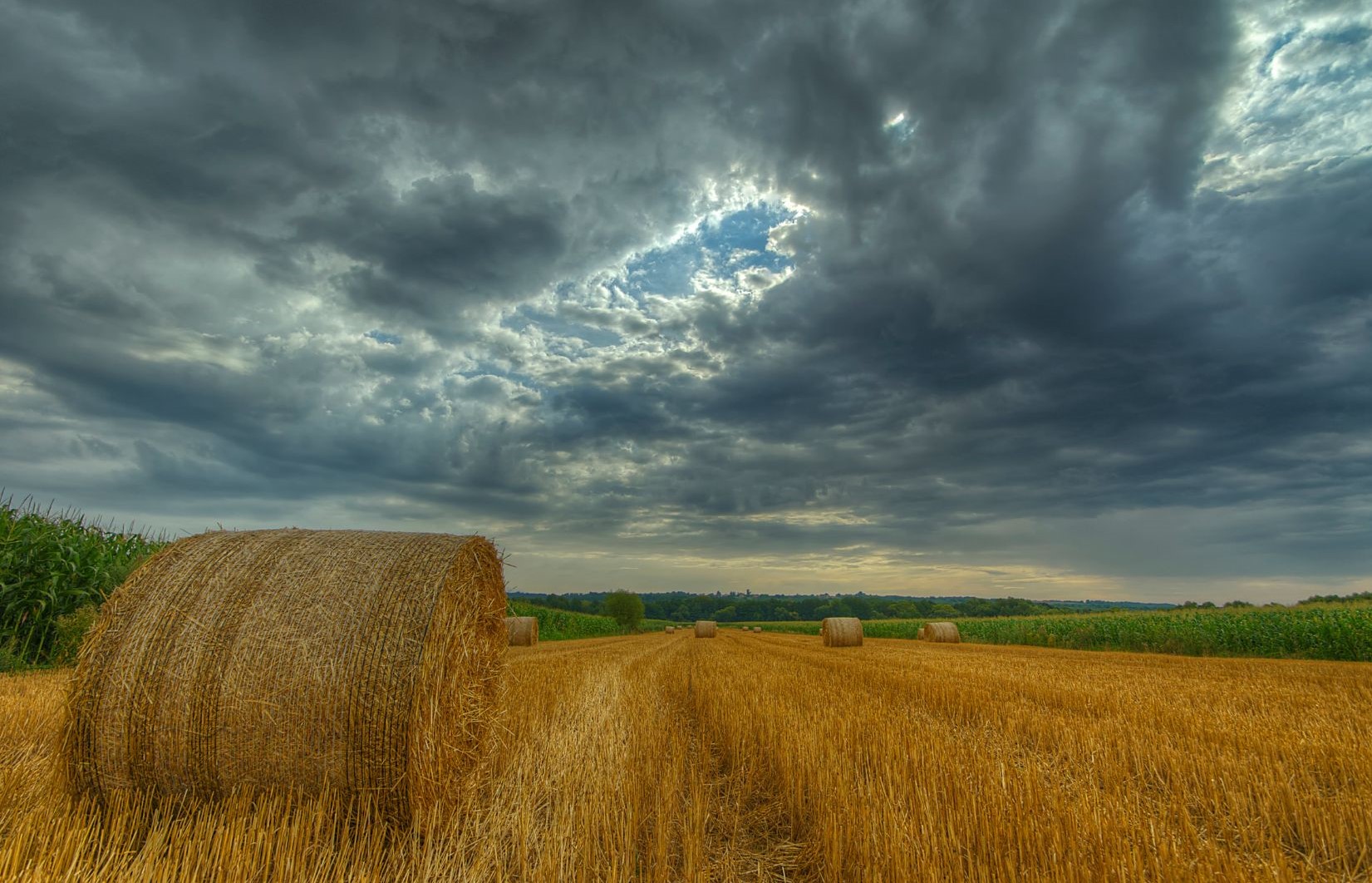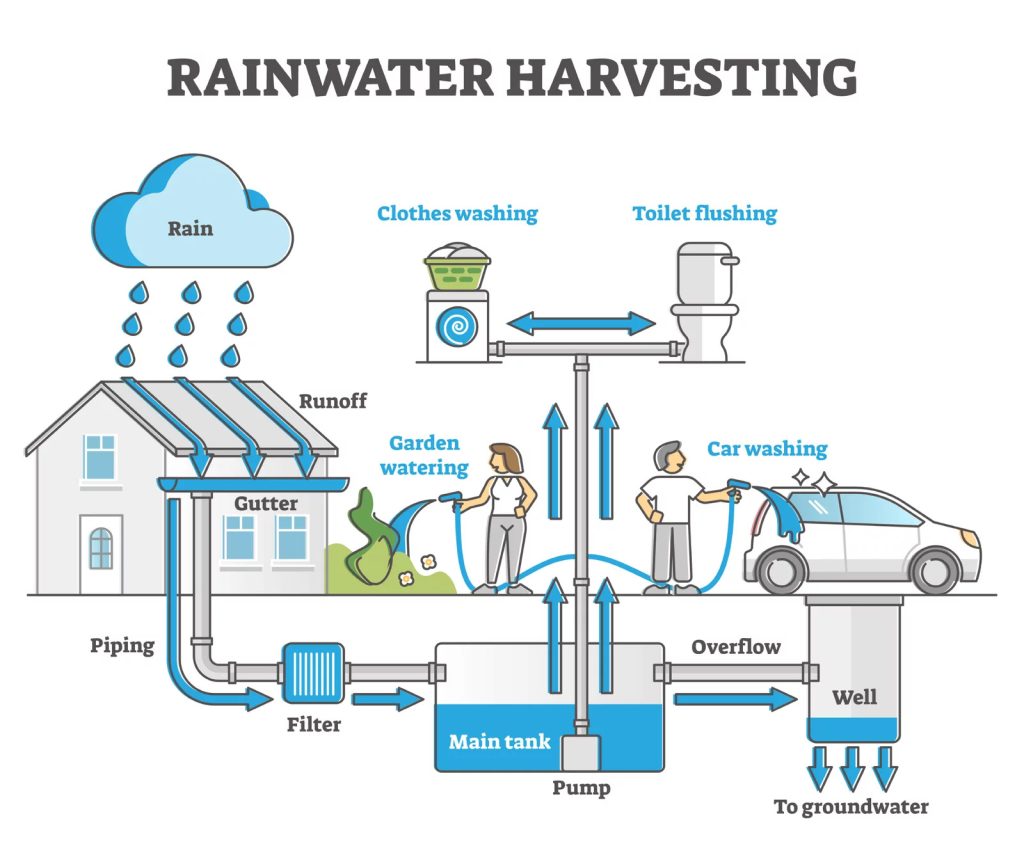Rainwater Harvesting can help Sub-Saharan African Farmers face Climate change
How to collect and use rainwater
The Food and Agriculture Organization (FAO) describes Rainwater Harvesting for agriculture as the direct collection, storage, and utilization of runoff rainwater for use in food production. Harvesting aims to ensure optimum present and future use of rainwater where it (the rainwater) falls before it finds its way onto secondary waterways, e.g., lakes.
Growing up on a small farm in the Kenyan countryside, one thing was always guaranteed; the rainfall cycle. The long rains came between March and May, and the short rains from August to September were like clockwork. Farmers knew when to till the land and when to sow their seeds because the rains would always come on schedule. Well, not anymore. The last years have been characterized by long periods of biting droughts and short, erratic, and heavy rainfall that often results in floods.
Climate change can be blamed for the erratic rainfall patterns that directly impact farming activities and food production across sub-Saharan African countries. Research by the FAO in the Caribbean suggests that rainwater harvesting can extend planting seasons to at least ten months of the year if done right (FAO 2008). The practice is a crucial and sustainable water management practice that holds significant potential for addressing water scarcity and promoting drought adaptation for farmers in Sub-Saharan Africa.
Types of Rainwater Harvesting:
There are various forms of rainwater harvesting systems available for implementation. They can be adjusted to suit local conditions and the available resources:
- Surface Runoff Collection: This technique consists of conveying rainwater from rooftops, hard surfaces, or native choices into storage tanks or water bodies. These holding facilities might range from uncomplicated receptacles to more elaborate systems, preserving the collected water for irrigating or livestock watering. It is the most common type of water harvesting in small and mid-sized farms.
- Rooftop Rainwater Collection: By taking advantage of rooftops as receivers, this method involves mounting gutters and downpipes to guide rainwater into preinstalled tanks. It is a popular and adaptive process, specifically in urban and peri-urban areas.
- Subsurface (Groundwater) Rainwater Capture: This approach involves mandating rainwater to penetrate the earth’s surface. Consequently, a replenishment of accessible aquifers is achievable, therefore bestowing a sustainable water source during drought.
- Check Dams and Contour Bunds: These structures are used to curb and accumulate surface runoff, enabling water to penetrate the soil and recharge underground water tables. This technique is especially effective in hilly or inclined terrain.
Water Harvesting Potential:
The water harvesting potential of a farm is the portion of rainwater that can be effectively harvested at the farm relative to the total amount of rainwater received at the farm over a period of time, often a decade or more. The predominant factors affecting the water harvesting potential of an area are rainfall and the nature of the catchment area.
- Rainfall: The quantity and frequency of rainfall significantly influence the water harvesting potential of an area. Low and irregular rainfall would necessitate large water storage facilities to hedge against long dry periods.
- Nature of Catchment Area: The catchment area characteristics inform the rainwater runoff coefficient. A runoff coefficient is the ratio of water that runs off a surface to the amount of water that falls on that surface (Pacey, Arnold, and Cullis, Adrian 1989).
Understanding the rainwater harvesting potential of an area or farm is crucial in determining whether or not to kick off a harvesting project. Rainwater harvesting projects can be capital or labor-intensive (or both) to kickstart, and therefore, a sober analysis of all the influencing factors is beyond essential. 
Advantages and Benefits of Rainwater Harvesting
Rainwater harvesting offers numerous benefits for drought adaptation in sub-Saharan Africa:
- Sustainable water source: By harvesting rainwater, people in localities can create a dependable water source that does not depend on erratic surface water or groundwater sources.
- Mitigation of Soil Erosion: Rainwater harvesting reduces surface runoff, minimizing soil erosion and preserving soil fertility.
- Improved Crop Yield: Captured rainwater is harnessed for agricultural irrigation during arid times, thus enhancing crop productivity and guaranteeing food security.
- Cost-Effectiveness: Rainwater harvesting systems are often low-cost and require minimal maintenance, making them accessible to rural and resource-limited communities.
- Reduced pressure on groundwater: The overexploitation of groundwater resources is an issue especially rampant in arid areas. One method of ameliorating the burden caused to aquifers by this is rainwater harvesting. Through this practice, these underground water reserves can be refreshed naturally.
Disadvantages of Rainwater Harvesting
- Seasonal Variation: Rainfall patterns can be erratic, resulting in variations in the availability of harvested rainwater throughout the year. This risks returning the farmer to the very challenge they’re attempting to mitigate.
- High Set-Up Costs: Although rainwater harvesting systems save money in the long run, there may be preliminary costs involved with fitting storage tanks, rain gutters, and filtration systems that may be too high for most smallholder farmers.
- Water Quality: Without proper filtration and treatment, harvested rainwater may be susceptible to contamination, necessitating careful water quality management.
- Storage Facilities: Storage spaces may be constrained in terms of capacity, potentially producing a surplus during inundating rain events.
Rainwater harvesting is a practicable and versatile solution for addressing water inadequacy and breeding drought adaptation in sub-Saharan Africa. Its various processes hold the flexibility to accommodate assorted regional conditions. Though rainwater harvesting systems present some issues, their sustainability, cost-effectiveness, and drought resistance advantages make them a necessary resource for communities attempting to thrive in the face of climatic fluctuation and water deficiency. By pairing rainwater harvesting with other techniques, such as efficient sprinkling methods and judicious use of soil moisture, this solution can offer a groundwork for long-term, sustainable water management and agricultural development. As farmers in sub-Saharan Africa continue to battle with changing weather conditions, harvesting rainwater can play a pivotal role in safeguarding water resources and ensuring a better future for the region’s inhabitants.
References:
- https://www.fao.org/3/br326e/br326e.pdf
- https://iwaponline.com/aqua/article/71/2/345/86677/Assessment-of-rainwater-harvesting-potential-of
- https://reliefweb.int/
- http://www.rainwaterharvesting.org/Urban/ThePotential.htm#:~:text=The%20Potential,called%20the%20water%20harvesting%20potential.
- http://www.rainwaterharvesting.org/Urban/ThePotential.htm#:~:text=The%20Potential,called%20the%20water%20harvesting%20potential.
- http://www.rainwaterharvesting.org/whatiswh.htm#:~:text=In%20general%2C%20water%20harvesting%20is,source%20of%20water%20for%20us.











































































